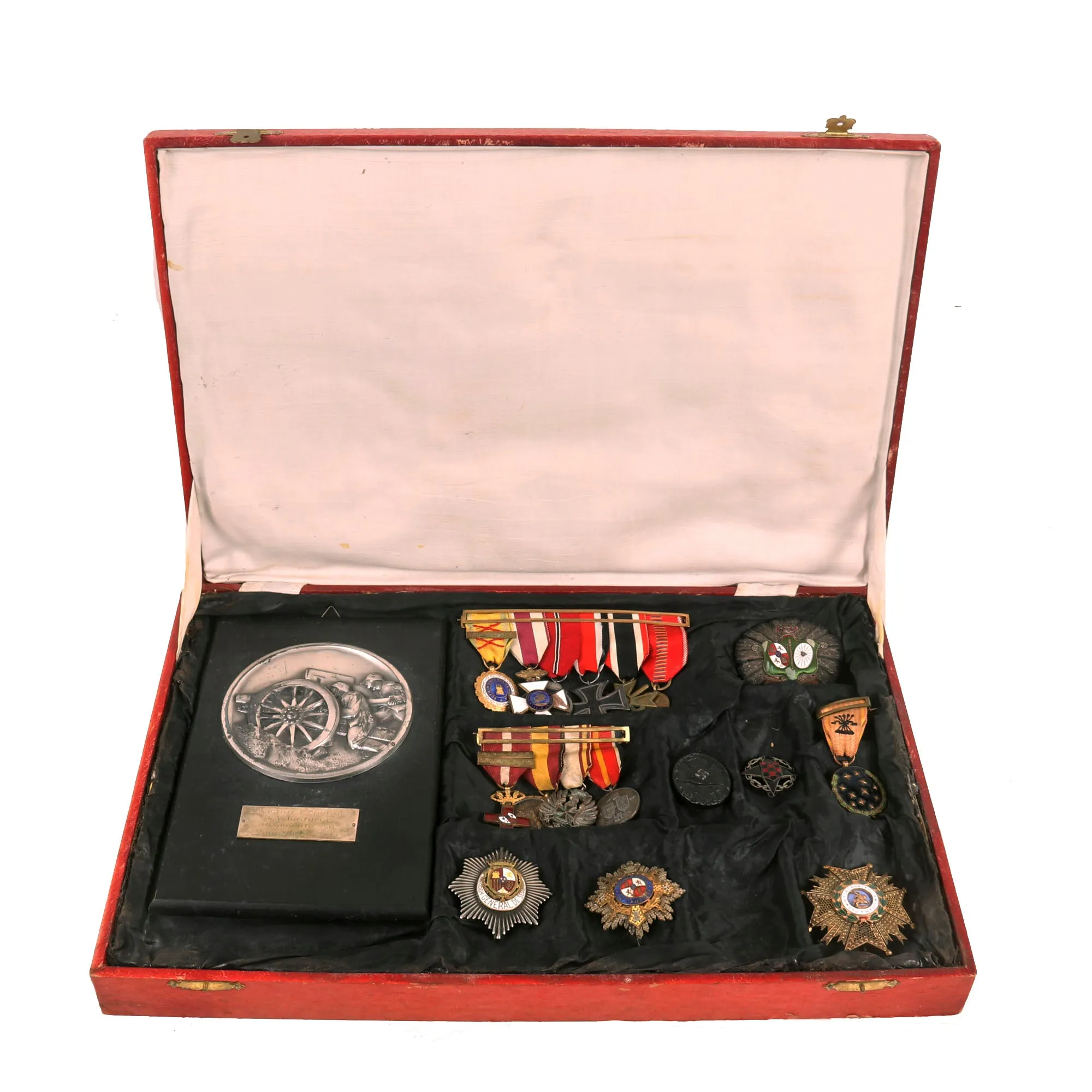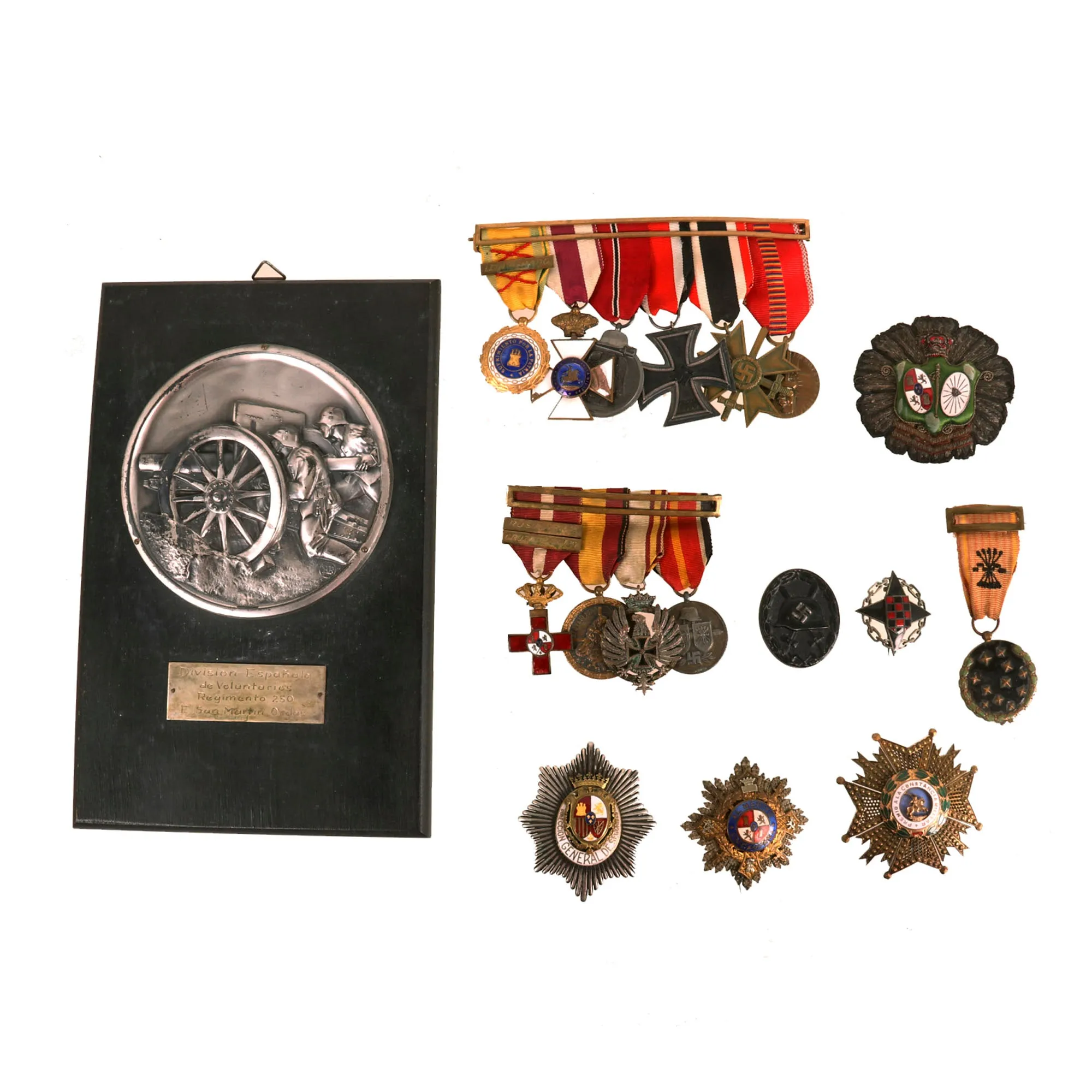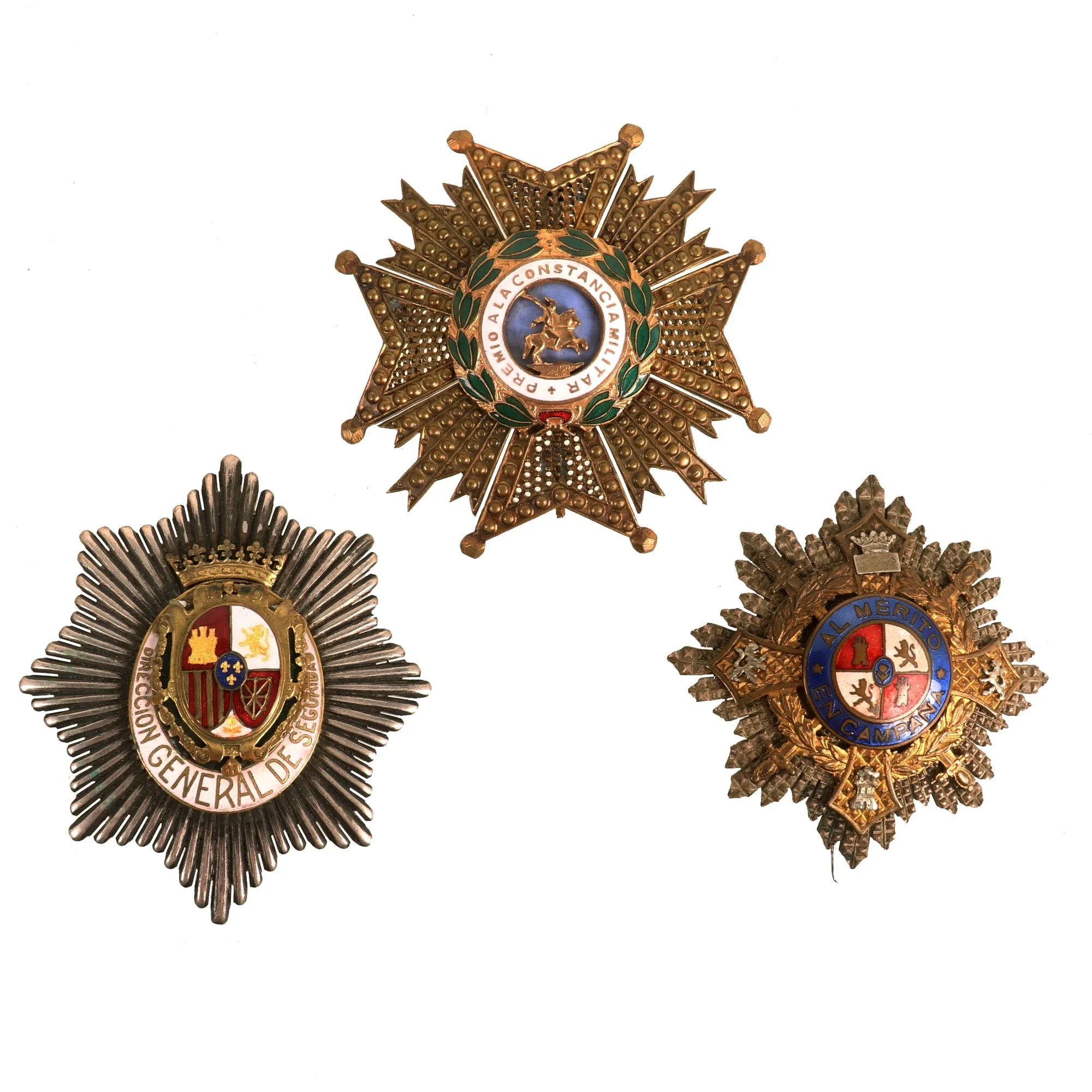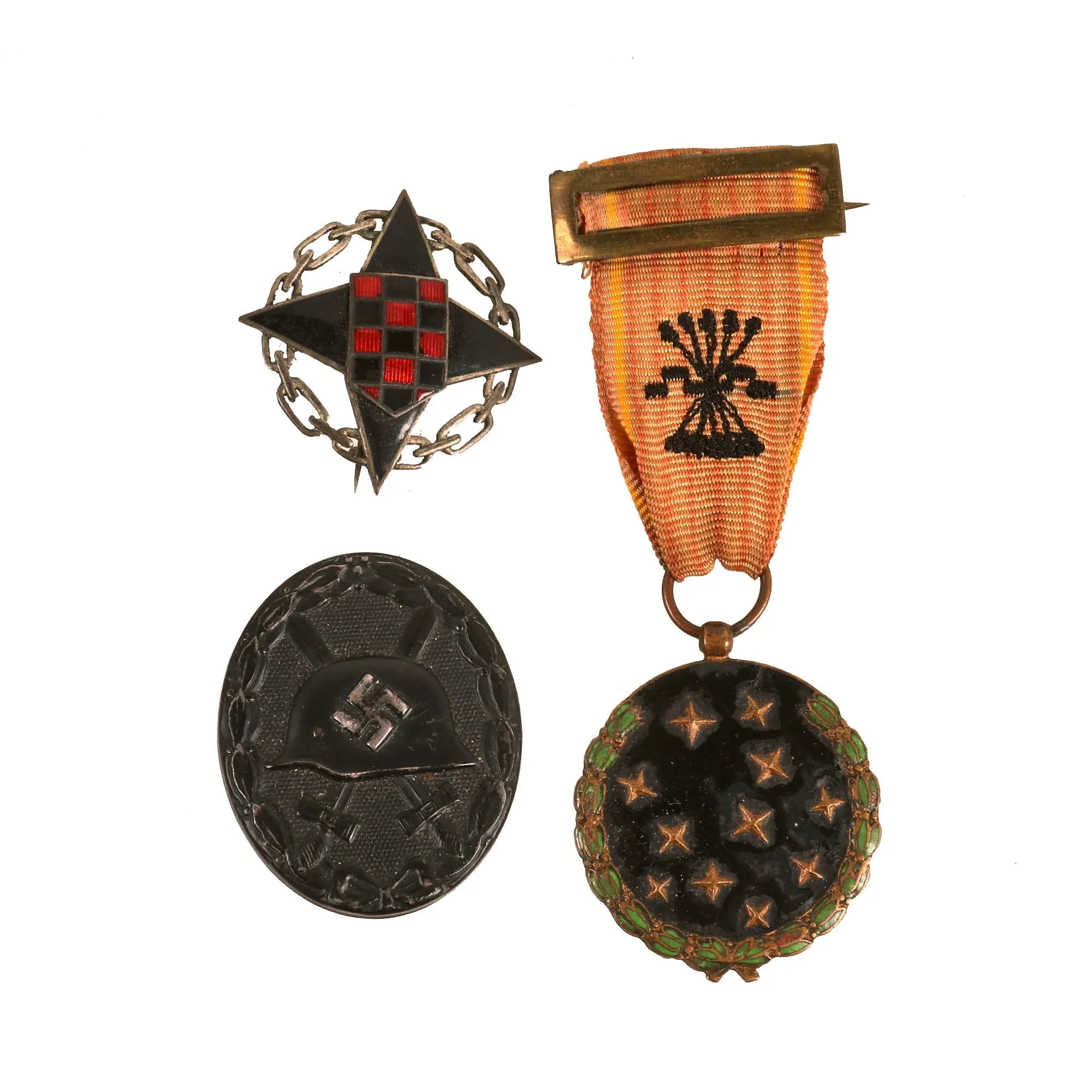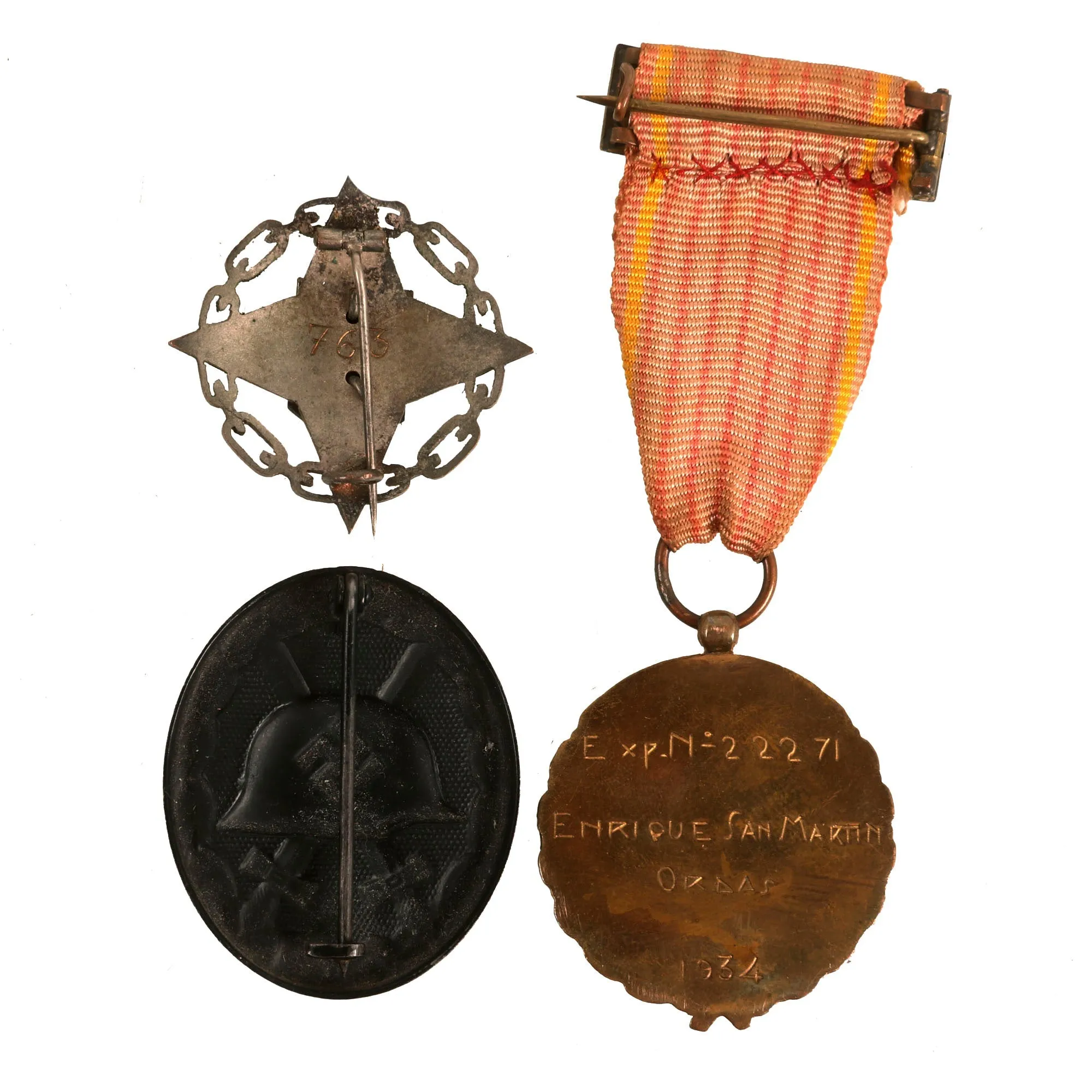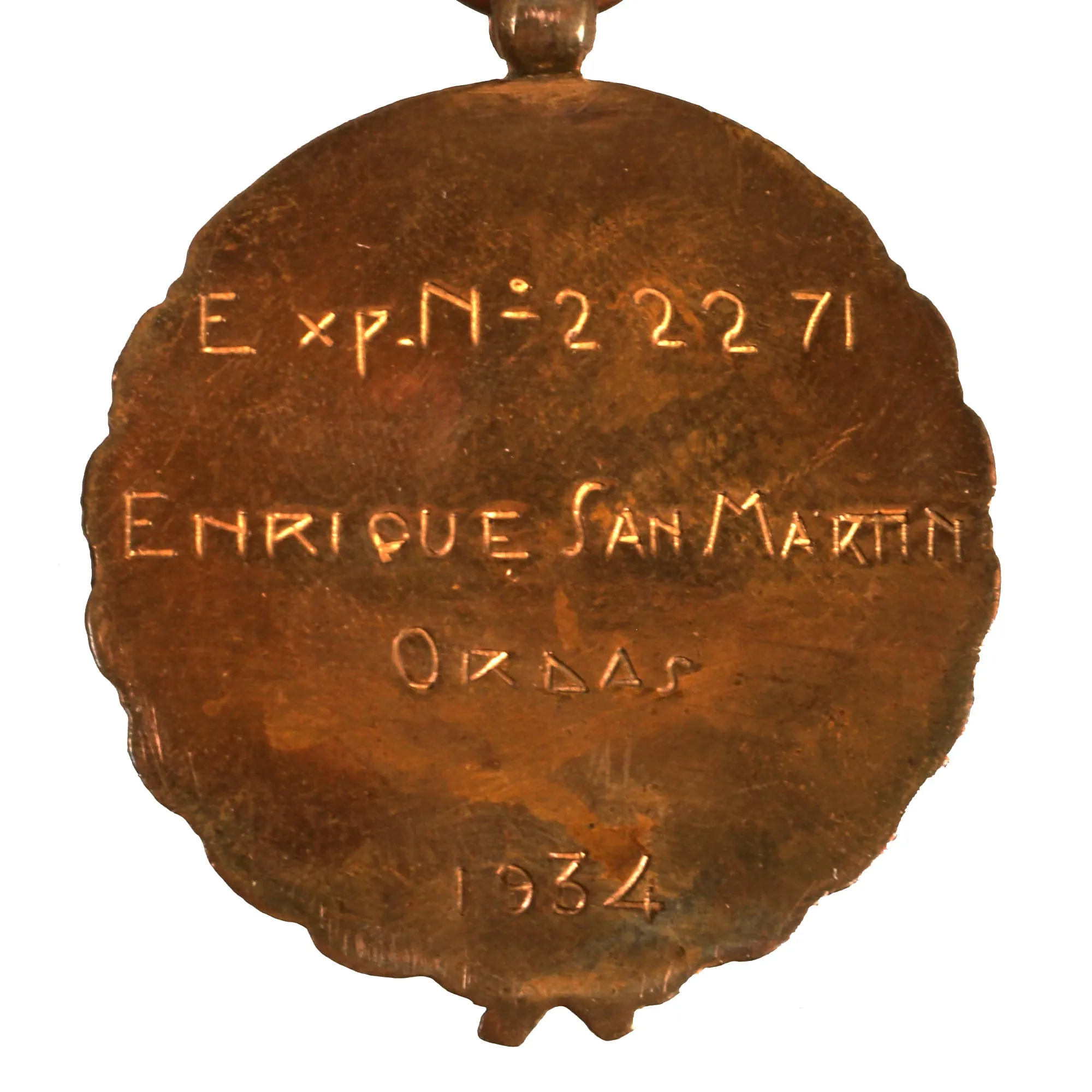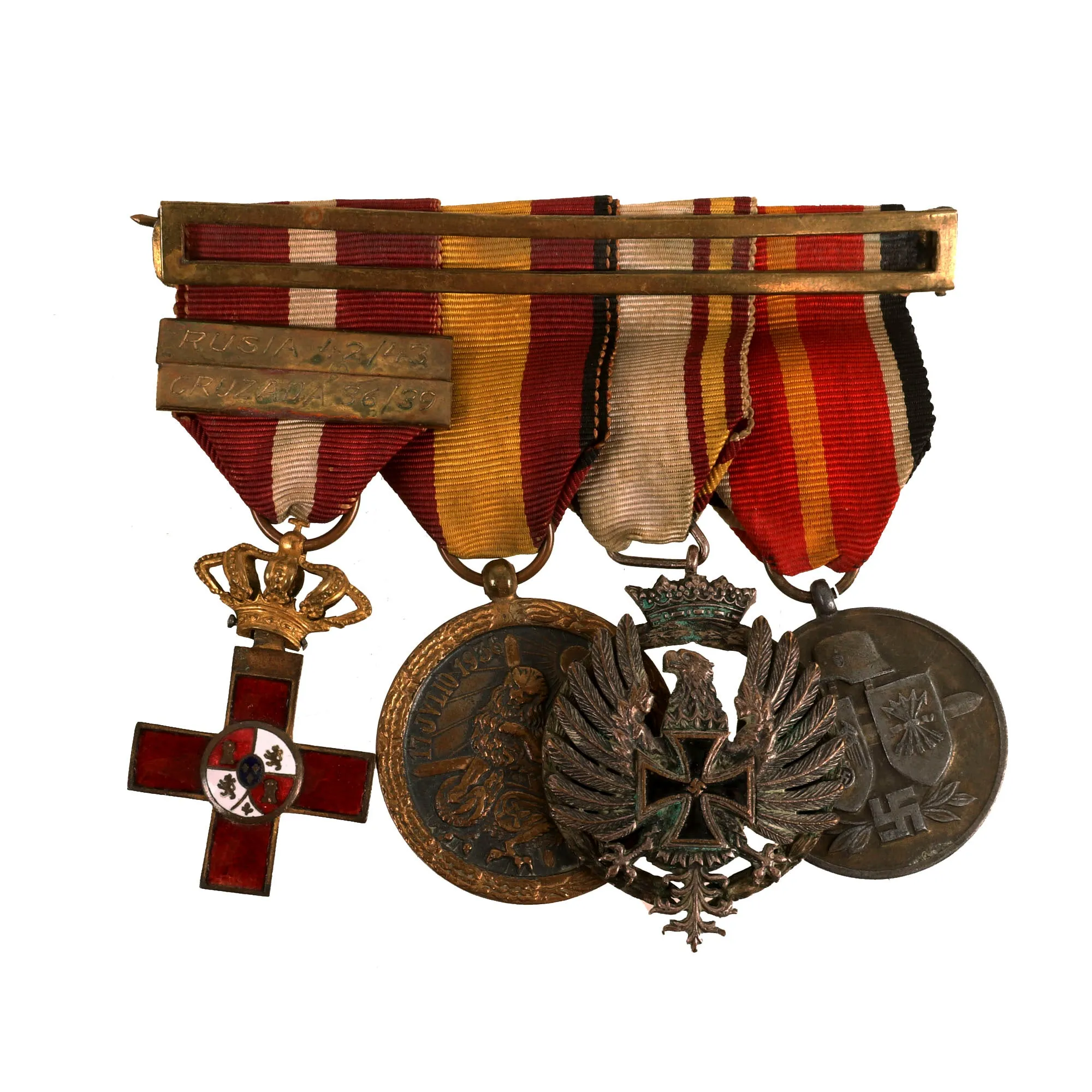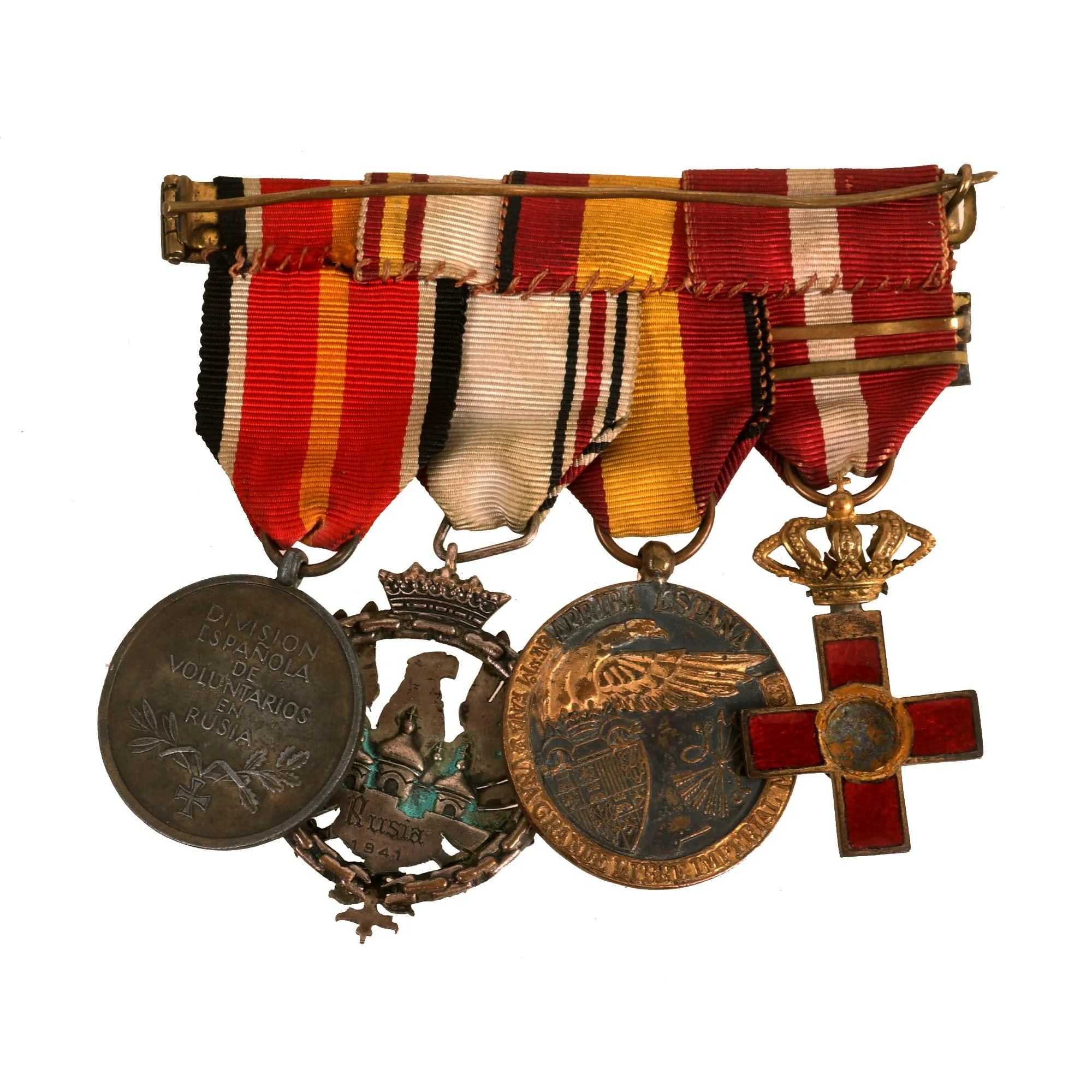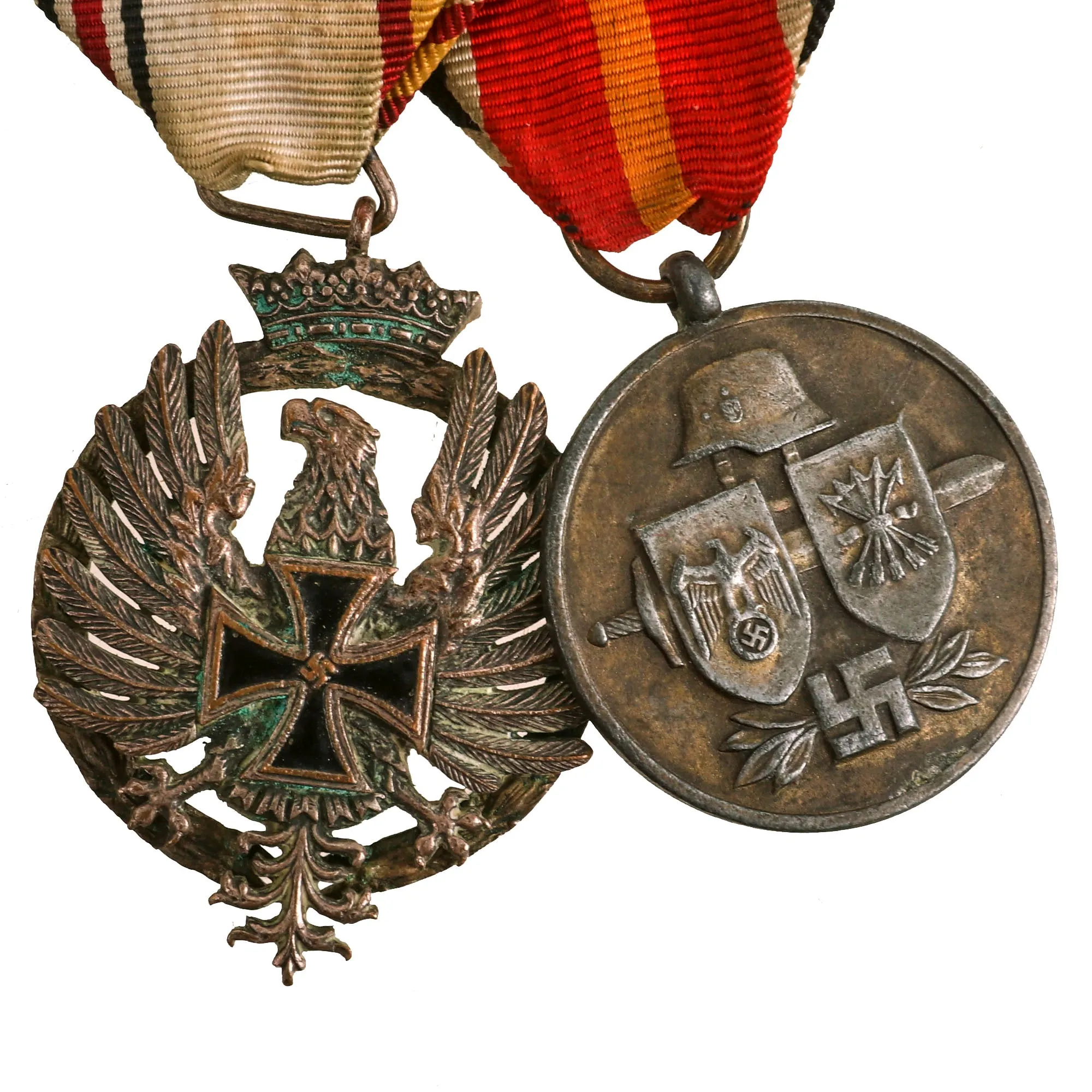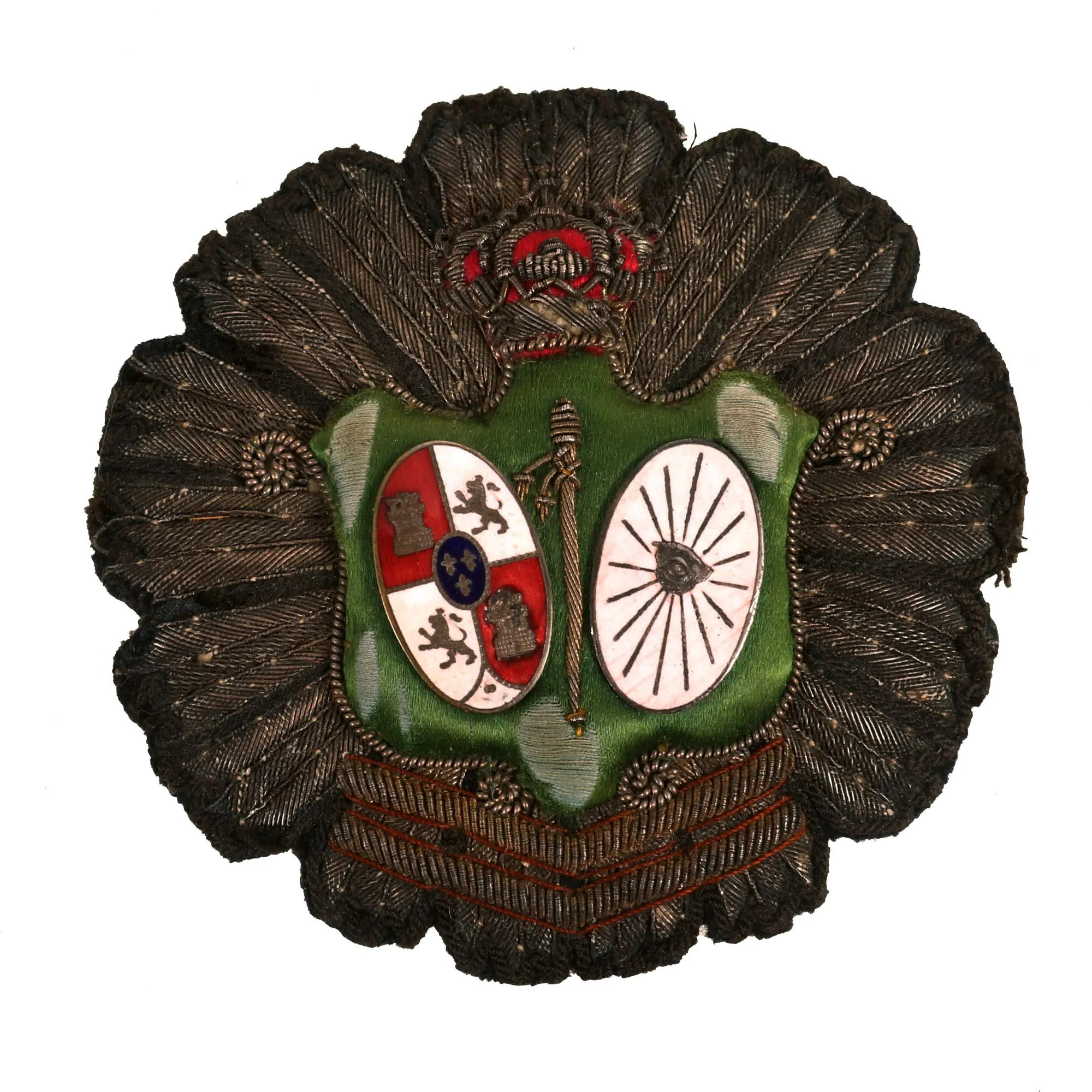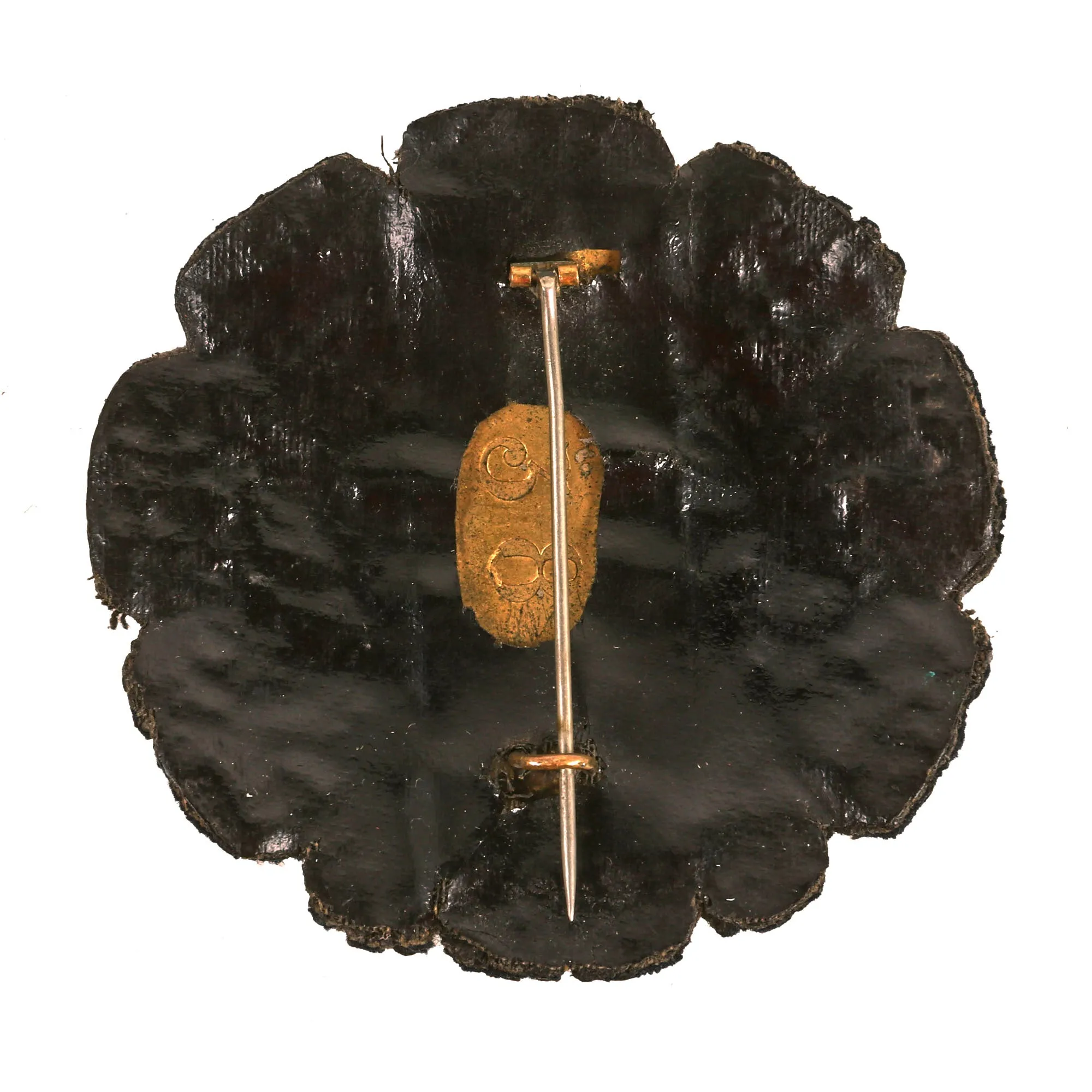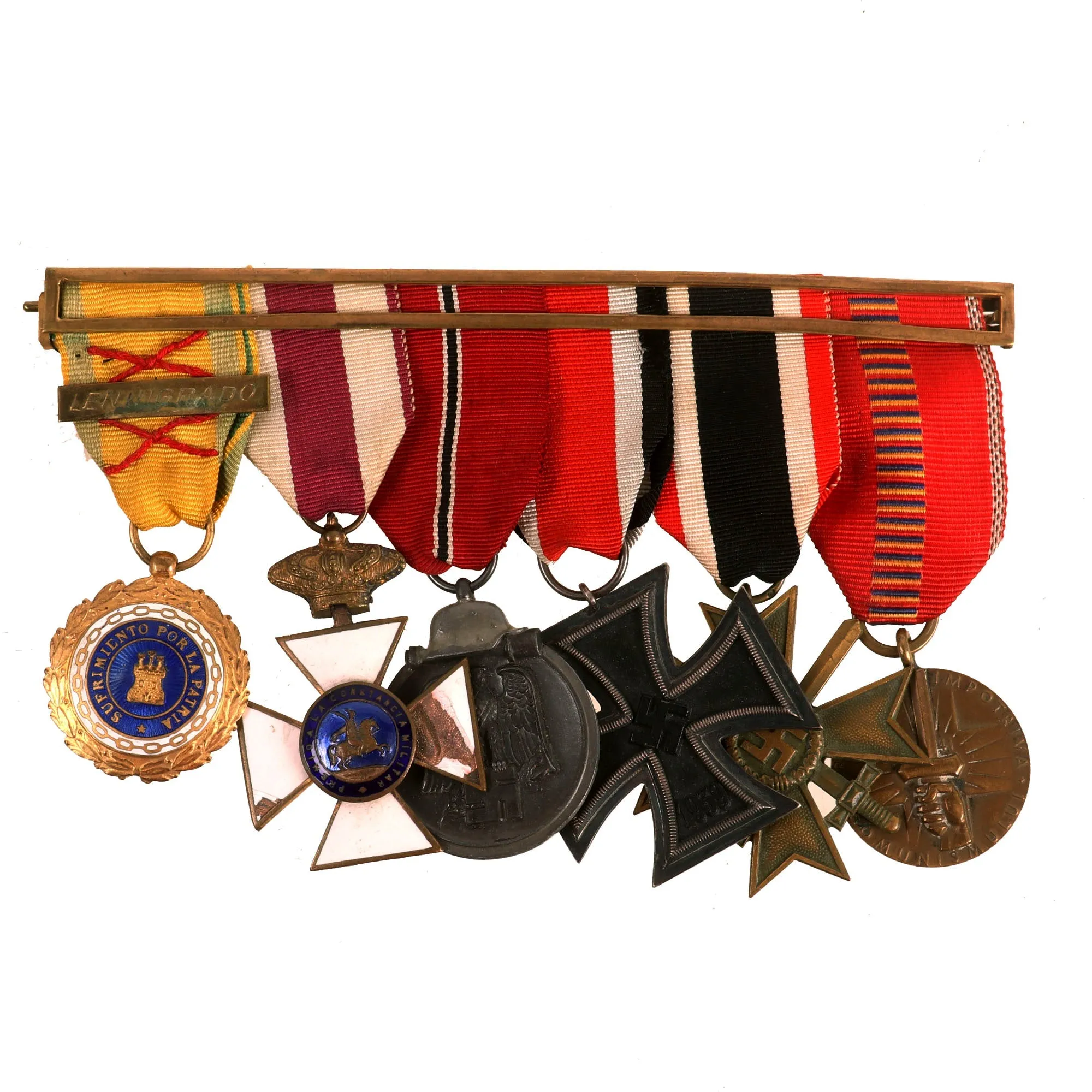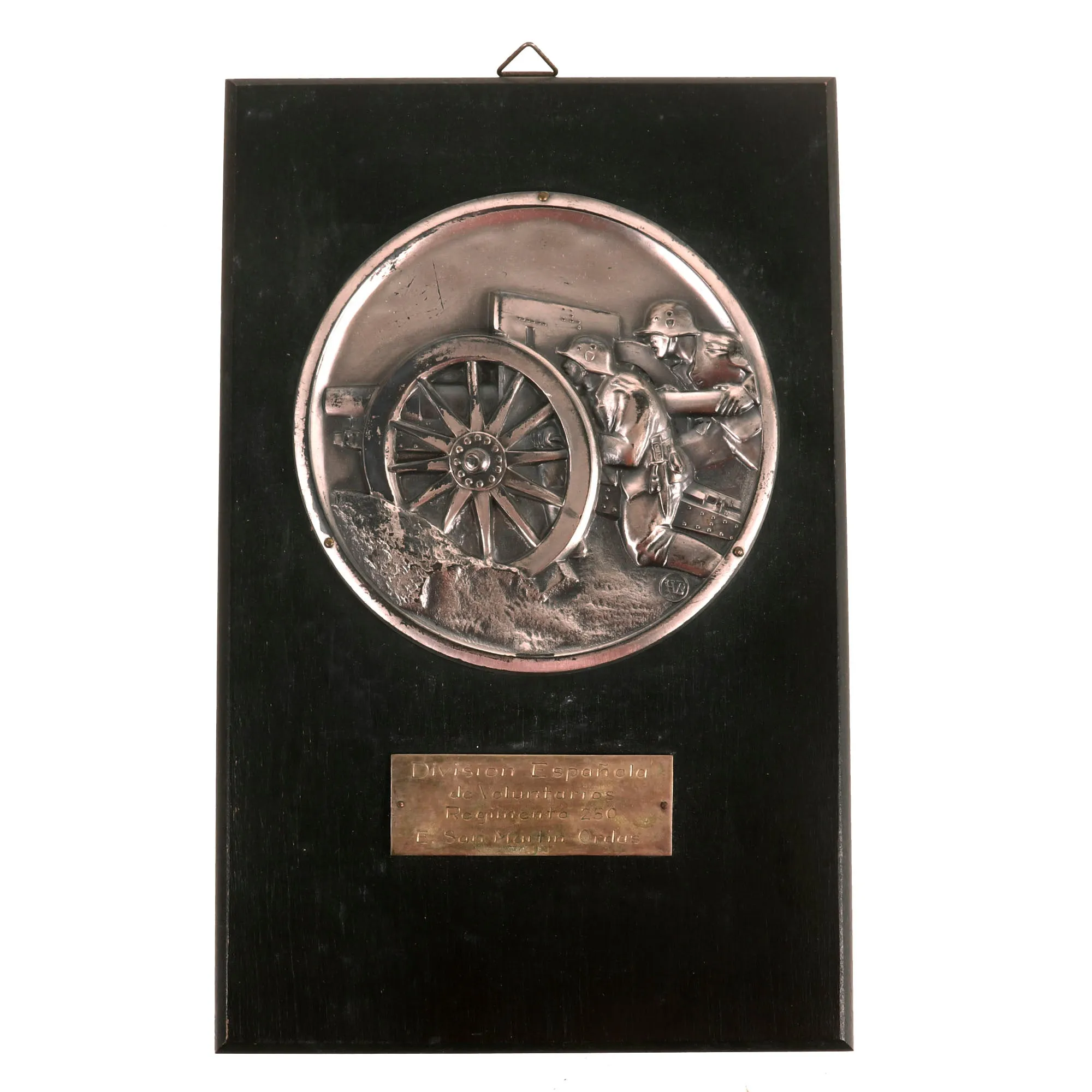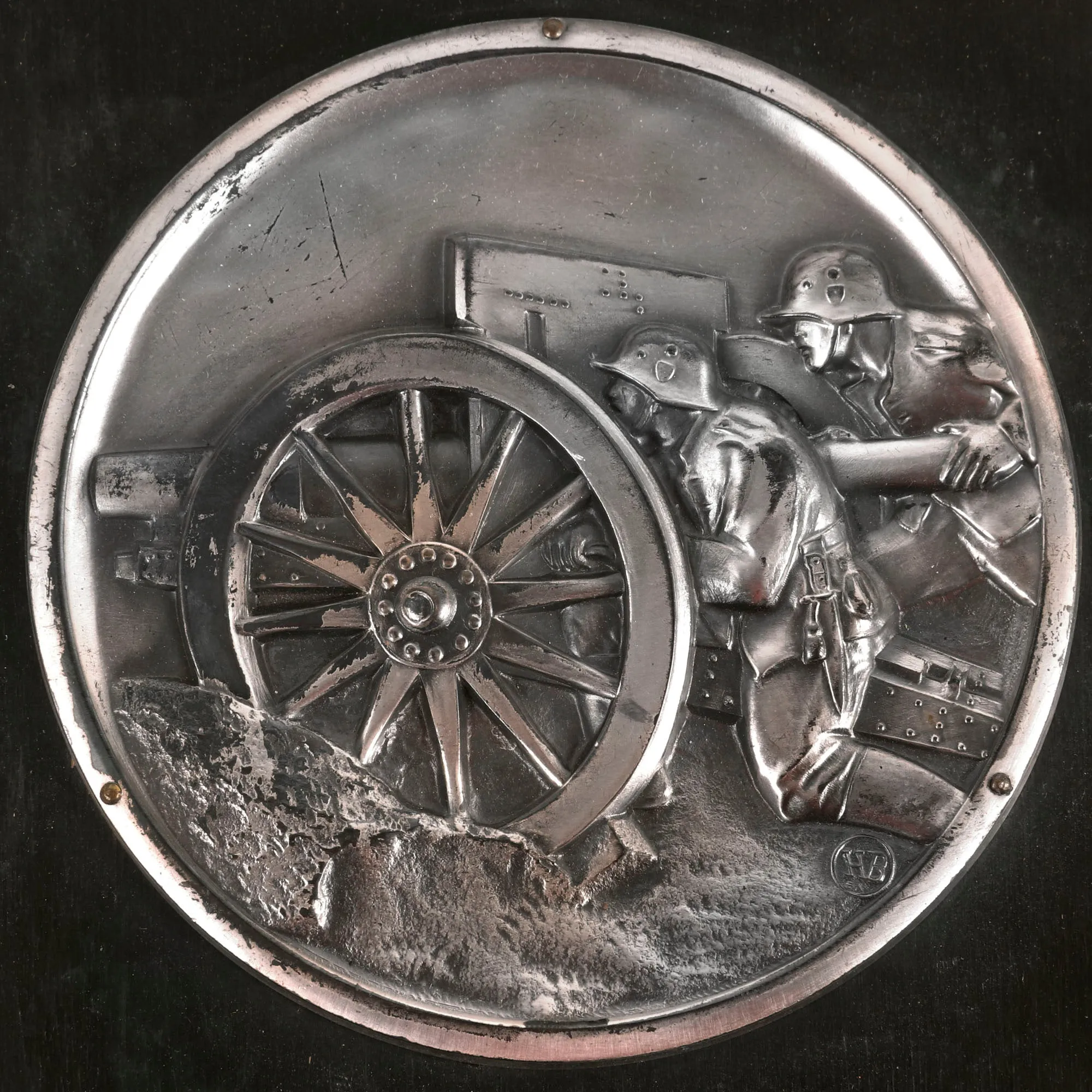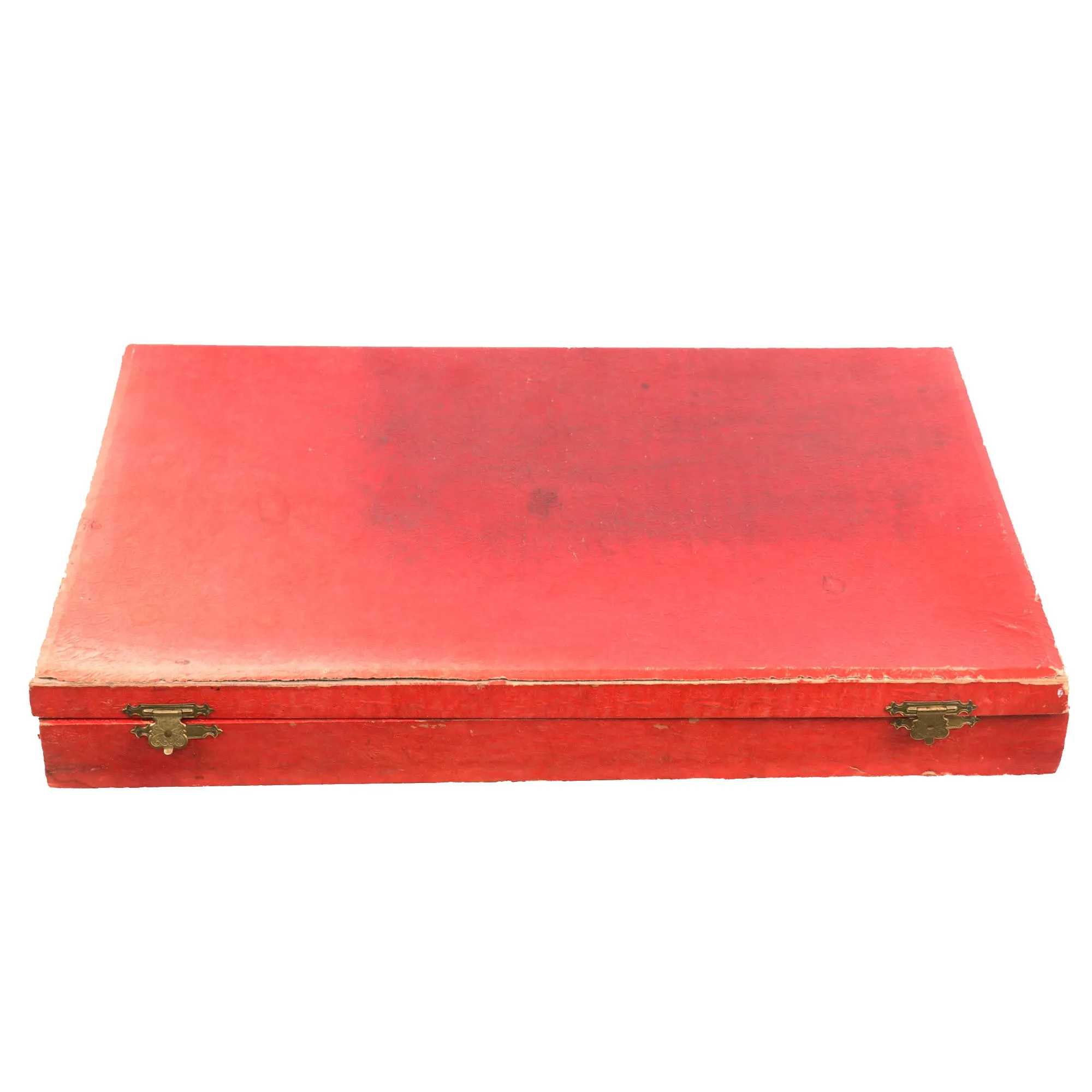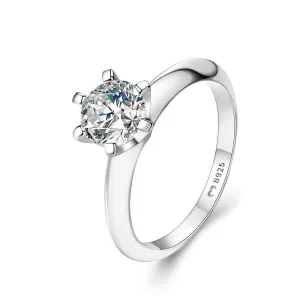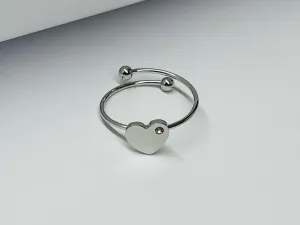Original Items. One-of-a-Kind. This is an extremely scarce medal grouping named to a soldier of the 250th Division of Spanish Volunteers, otherwise known as the Blue Division, which was a unit of volunteers from Francoist Spain operating from 1941 to 1944 within the German Army (Wehrmacht) on the Eastern Front during World War II.
The medal grouping includes a wooden 6 ¼" x 9 ⅞” plaque with a medal depicting two men of the Blue Division firing a field cannon, with a small engraved plaque underneath reading:
Division Española
De Voluntarios
Regimento 250
E. San Martin Ordas
Which translates to:
Spanish Division
Volunteer
Regiment 250
E. San Martin Ordas
The other items in this group include:
● One 6-place medal bar with the Medal of Suffering for the Fatherland with one clasp for LENINGRADO (Leningrad) and two red Xs stitched on denoting wounds, the Officers Constancy Medal, the German Winterschlacht Medal, the German Iron Cross 2nd Class, the German War Merit Cross with Swords, and the Romanian Crusade Against Communism Medal.
● One 4-place medal bar with the Spanish Military Merit Cross with clasps for Rusia 42/43 and Cruzada 36/39, the Spanish Civil War Campaign Medal, the Medalla de la Campaña de Rusia ("Medal of the Russian Campaign") in a high-end intricate design, and the Spanish Volunteer Medal (Blue Division Medal).
● One Black German wound badge, hollow back, denoting one wound.
● One gorgeous bullion Spanish Alfonso XII Security breast badge, with oil-cloth backing and 38 stamped on the gilt back. Pin-back. Phenomenally rare.
● Spanish Medal of the Old Guard with Falange ribbon, engraved n the reverse EXP. NO.22271 ENRIQUE SAN MARTIN ORDAS 1934.
● An SEU Founder’s badge, numbered 763 on the reverse.
● Spanish WWII Grand Cross of Al Merito En Campana (Order of Merit in the Campaign) breast star. Pin-back.
● 1923 Spanish Security breast star, numbered 1172 on reverse.
● Royal and Military Order of Saint Hermenegildo breast star, a military distinction and a cavalry order created by Fernando VII at the end of the war of independence on November 28th, 1814.
The medal grouping is stored in a red case lined with black fabric, not originally made to hold this grouping but altered to fit them all. The case works fine for display but is itself in rough shape with the lid coming close to breaking off. It works fine to display the group however, and measures 19" x 12 ¾" x 2 ½”.
We have never offered anything like this before, a truly exceptional medal group to a named soldier of the famed Blue Division. Anything related to this division is unbelievably scarce, so don’t miss out on this amazing group. Comes ready for further research and display.
Francisco Franco had secured power in Spain after the Nationalist victory in the Spanish Civil War (1936–1939), during which the Nationalists received support from Germany. Franco's authoritarian regime remained officially non-belligerent in World War II but sympathised with the Axis powers. After lobbying by the Spanish Foreign Minister Ramón Serrano Suñer and by senior figures within the Spanish Army following the 22 June 1941 launch of Operation Barbarossa, Franco agreed that Spanish people would be permitted to enlist privately in the German Army and undertook to provide tacit support. An infantry division was raised from Falangist and Spanish Army cadres and was sent for training in Germany. The unit fought on the Eastern Front and notably participated in the 1941–1944 siege of Leningrad, but was withdrawn from the Front after Allied pressure in October 1944 and returned to Spain soon afterwards. Several thousand non-returners were incorporated into the 121st Infantry Division, the short-lived Blue Legion, and eventually into the Waffen-SS.
On 13 July 1941 the first train left Madrid for Grafenwöhr, Bavaria for a further five weeks of training. There they became the German Army's 250th Infantry Division and were initially divided into four infantry regiments, as in a standard Spanish division. To aid their integration into the German supply system, they soon adopted the standard German model of three regiments. One of the original regiments was dispersed amongst the others, which were then named after three of the Spanish cities that volunteers largely originated from—Madrid, Valencia and Seville. Each regiment had three battalions (of four companies each) and two weapons companies, supported by an artillery regiment of four battalions (of three batteries each). There were enough men left over to create an assault battalion, mainly armed with submachine guns. Later, due to casualties, this unit was disbanded. Aviator volunteers formed a Blue Squadron (Escuadrillas Azules) which, using Messerschmitt Bf 109s and Focke-Wulf Fw 190s, claimed to have shot down 156 Soviet aircraft.
Hundreds of Blue Division prisoners of war were held by the Soviet authorities. While most prisoners from other nations would be repatriated after the war, Francoist Spain and the Soviet Union did not have diplomatic relations. Soviet camps held together staunch anti-Communist prisoners, those who collaborated with the Soviets either by their previous hidden ideology or after captivity and even those Republican sailors whose Spanish ships had been requisitioned after the fall of the Republic. In 1954, after the death of Stalin, the French Red Cross arranged the ship Semiramis to bring those prisoners who desired repatriation to Barcelona.




